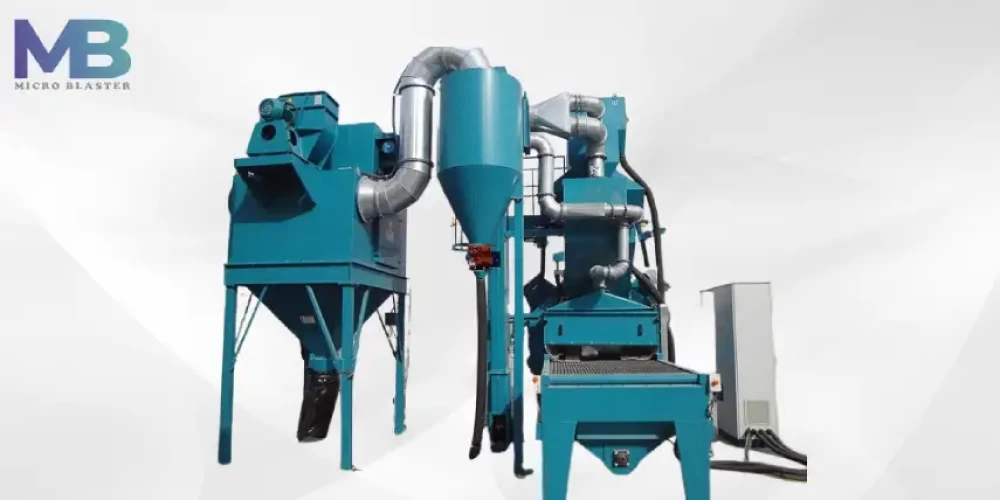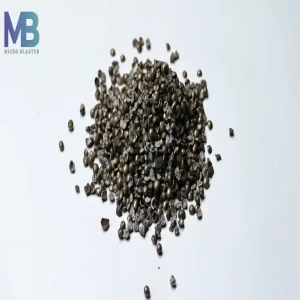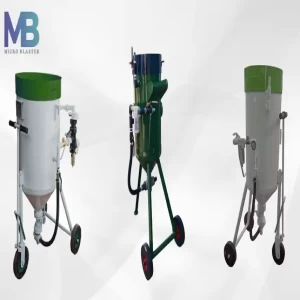Search

What is shot blasting machine?
In general shot blasting concentrates abrasive media at high speed (65-110 m/second) in a controlled manner at the material thereby removing surface contaminates due to the abrasive impact. Initially in the 1930’s the shotblasting process used compressed air for propelling the steel shot. This method remains in use today for cleaning metal frames and weldments.

General Introduction to Shot Blasting
Shot Blasting is a surface treatment process using high velocity steel abrasive. Shot blasting is method through which it is possible to obtain excellent cleaning and surface preparation for secondary finishing operations. Shot blasting is commonly used for:
- The cleaning of iron, steel, non-cast parts, forgings, etc.
- Mechanical cleaning of sheets, rods, coils, wire, etc.
- Shot peening to alter mechanical properties (increasing resistance to fatigue for springs, gears, etc.)
- Preparing surfaces to be painted, coated, etc.
In general shot blasting concentrates abrasive media at high speed (65-110 m/second) in a controlled manner at the material thereby removing surface contaminates due to the abrasive impact. Initially in the 1930’s the shotblasting process used compressed air for propelling the steel shot. This method remains in use today for cleaning metal frames and weldments.
Shot blast machine lines, both manual and automated systems, became possible with the introduction of centrifugal wheel blast machines. The system of shot blasting by centrifugal wheel is more productive than by compressed air and achieves a better more uniform surface finish.
The criteria used for selecting the type of shot blasting machine depends on the size and shape of the parts, the condition of the surface to be cleaned, final surface finish specification and overall process required.
Shot blasting machine are comprised of 6 basic subsystems:
- Abrasive delivery method:
- By Compressed Air.
- By Centrifugal turbines.
- Abrasive recovery and cleaning.
- Dust collection.
- Blasting Cabinet.
- Part movement and support system.
- Controls and instrumentation.
Abrasive delivery method:
There are two ways of accelerating the steel shot:
By compressed air:
Shot blaster is suitable for lower production applications where maximum flexibility is needed.
These systems are very flexible in that the shot can be delivered horizontally through a rubber hose and blasting nozzle assembly. This enables uses in finishing operations of steel frames and weldments thereby replacing hand tools. Because of this, an air blasting machine for a production line is expensive compared to the centrifugal wheel blasting machine.
For example to deliver shot at a rate of 1100 kg per minute a 1650 Hp compressor and 33 workers are needed using 10 mm diameter nozzles delivering 6.5 kg/cm2. On the other hand the same task using centrifugal wheel turbines only requires a total of 100 Hp distributed to between one or a multitude of turbines housed in the same machine. Only one or two operators are needed for such a shot blasting machine.
By centrifugal turbine:
Centrifugal wheel blasting is the more common blast cleaning technique as well as the most economical and environmentally friendly method. The turbine delivers abrasive shot by centrifugal force in a specific and controlled direction, speed and quantity.
Function of the turbine is similar to that of a fan or centrifugal pump. Shot blasting machines may use one or a multitude of turbines positioned in such a way that the abrasive blast pattern covers the entire surface of the material to be shot cleaned.
The shape and size of the parts determine the number of turbines used in a machine. Power of the turbine motor is based on degree of cleaning needed and throughout speed of the material.
2. Abrasive Recovery and cleaning system:
Recirculation and cleaning the abrasive shot is required to maintain a consistent cleaning operation. In conventional shot blasting equipment after the shot hits the part the abrasive falls into the collection hopper under the machine.
The shot is then carried by gravity or screw conveyor to a bucket elevator. The elevator carries the shot, removed oxides and other contaminates to an air wash separator located in the upper portion of the machine. A combination of baffles, strainers and plates separate these contaminates which are ineffective during the shot blast operation. The cleaned abrasive is contained in an upper hopper (feeding-box) and is subsequently fed into the shot turbine by gravity. The recirculating and cleaning capacity of the abrasive in each machine is related to the shot blasting power used for the turbines. An incorrectly sized system will cause premature wear to the machine and decrease overall shot blasting effectiveness and shot consumption.
3. Blast Cabinet:
The shot blasting cabinet contains dust and abrasive. A machine mounted dust collector, reduces air pressure inside the machine thereby preventing dust from escaping into the shop environment. Material access openings in the entrance and exit of the shot blaster must be designed and protected to prevent abrasive spillage. Cabinets are built from low carbon steel with an inner shell made of abrasive resistant materials including high strength alloy plates and thick rubber compounds. In the areas that are subject to direct high velocity shot, alloy steel plates (64 RC hardness) are used which have much more abrasion resistance than other more commonly used materials like manganese steel.
4. Dust collector system:
Dust produced during shot blasting is withdrawn from the machinery cabinet and continuously recirculating abrasive by a dust collector. Typical dust collector design uses baffle filters or cartridges.
The dust collector not only evacuates dust within the machine but also keeps the surrounding area clean and dust free. Changes in airflow will reduce collector efficiency and therefore result in lower dust extraction, loss of the cleaning power, and contribute to dust in the immediate production area. A properly designed and sized dust collector is therefore critical to the ongoing performance of the shot blasting System.
5. System for holding and transporting parts for shot blasting:
Handling and transporting parts through the shot blast process will depend on several factors.
For materials in large quantities (brake, pulleys, screwdrivers, etc.) tumblast shot blasting machines are used. For larger and heavier pieces, (motor blocks, bicycles frames, bunchwelded parts, etc.) spinner hanger type shot blasting machines are used.
For the shot peening of gears and other special components, tables and multi tables machines are used. For cleaning pipes, plates, bars, wire continuous machines are used.
6. Controls and instrumentation:
The system providing the control and instruction for the starting and stopping all functions such as, elevators, dust collectors, turbines, part handling system, ammeters and time meters for the turbine motors are all placed in a central console.
The control panel is designed with sequential startup to assure the different sstems are energized in the proper sequence. All systems can be automated for continuous processing that will increase production, reduce operator interaction and consistently maintain a particular surface specification.
Abrasive media:
The projection equipment particles by compressed air, working interchangeably with any kind of abrasives, metal or mineral, allowing you to select the proper abrasive for each type of work.
The projection equipment by turbines used exclusively metallic steel shot, carbon or stainless steel shot, of different diameters as is the type of work to be done. Indoors, it is extremely advantageous to use metal abrasive over other known abrasive highlighting the following advantages,
- More productivity
- Lower cost for abrasive blasted surface
- Reduced maintenance costs
- Better quality of work performed (homogeneity, roughness, cleaning)
- Reduced waste generation and dust
- No risk to operator health
- Low investment in dust collection systems
- Less environmental pollution
- Better visibility for operators
Blast Cleaning and Shot peening machines are widely used in different industries such as:
- Shipyards:
- Cleaning and preparation of profiles and sheets surfaces before painting
- Portable machines for the maintenance of ship hulls
- Automotive components:
- Cleaning of gearboxes, mechanical transmissions, connecting rods, etc.
- Shot peening of stabilizing bars, springs and elastics, gearboxes, pistons, connecting rods, etc for increasing fatigue resistance.
- Cleaning and preparation of car and truck tires before painting.
- Break shoes and clutches blasting
- Cleaning of rectified engines components (blocks, pistons, etc).
- Screw mechanical descaling from metric 3 before coating application
- Aviation:
- Portable machines for rubber elimination and roughness restitution in airport tracks
- Shot peening of airplane components tincrease fatigue resistance.
- Airplane painting removal
- Bicycles and motor bikes:
- Cleaning and preparation of bicycle frames, motorbikes and tires surface before painting.
- Rubber:
- Cleaning and preparation of steel part surfaces before rubber application.
- Concrete, ceramics, marbles:
- Blast for making non-slipping floors.
- Artistic blasting.
- Coach builders:
- Cleaning and preparation of truck coaches surfaces before painting.
- Denin Jeans:
- Erosion of clothes (jeans).

